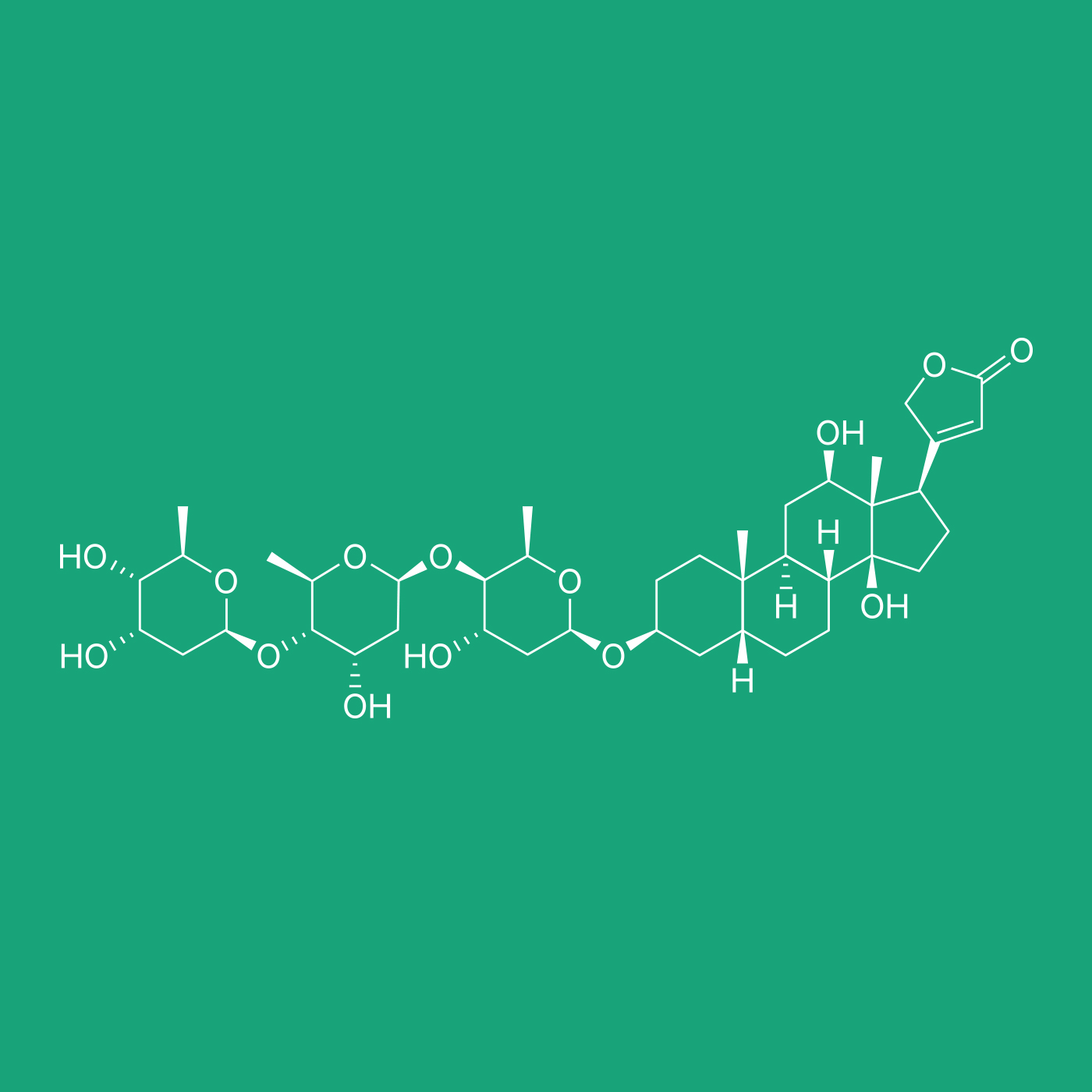APIs

Digoxin
Digoxin is a cardiac glycoside extracted from the leaves of the foxglove plant Digitalis lanata. 1 Although the properties of digitalis extracts have been known since the dark ages, their cardiac effects were discovered by the Scottish doctor William Withering in 1776. According to the history, during the treatment of one of his patients, who had a severe heart condition to which no treatment was available at that time. As a last resource, the patient went to a local gypsy, who gave him a secret plant extract, which improved his condition considerably. Intrigued by the fact, Dr. Withering met the gypsy, who revealed that the active ingredient of her potion was an extract of a foxglove plant.2 Currently, digoxin is on the World Health Organization’s List of Essential Medicines.
C2 PHARMA is the leading manufacturer and supplier of digoxin. It is manufactured via extraction from Digitalis lanata leaves.
USES
Digoxin is used chronically in the therapy of cardiac arrhythmias, especially atrial fibrillation, atrial flutter and heart failure. It is the most effective medicine for the treatment of heart failure, and a third line medication in the treatment of irregular heartbeat. It is normally administered orally as tabs but can also be given intravenously under urgent circumstances.3
MECHANISM OF ACTION
Digoxin acts mainly in the myocardium inhibiting the sodium potassium adenosine triphosphatase (Na+/K+ ATPase) membrane pump, which promotes an increase in the sodium levels within the cell, leading to a decrease in the activity of the sodium-calcium exchanger. This inactivation also causes an increase in calcium concentration, which regulates the activity of contractile proteins like actin and myosin, for example, leading to a decrease in heart rate. Overall, the heart rate is decreased (bradycardia) while blood pressure is increased, resulting in a net increase in stroke volume, leading to increased heart perfusion.3
REFERENCES
- Hollman, A. BMJ, 1996, 312, 912.
- Withering, W. In: An Account of the Foxglove and some of its Medical Uses With Practical Remarks on Dropsy and Other Diseases. 1785.
- Li-Saw-Hee, F.L.; Lip, G.Y. QJM: An International Journal of Medicine, 1998, 91, 259–264.